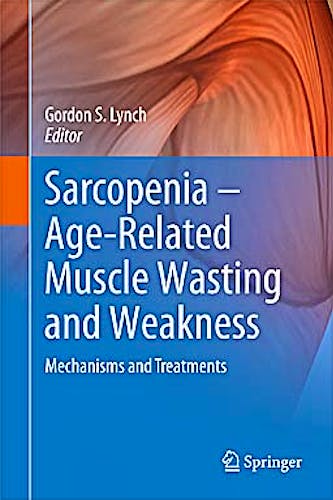

No hay productos en el carrito



Sarcopenia – Age-Related Muscle Wasting and Weakness. Mechanisms and Treatments
Lynch, G.
1ª Edición Enero 2011
Inglés
Tapa dura
480 pags
1400 gr
null x null x null cm
ISBN 9789048197125
Editorial SPRINGER
ABOUT THIS BOOK
Some of the most serious consequences of aging are its effects on skeletal
muscle. ‘Sarcopenia’, the progressive age-related loss of muscle
mass and associated muscle weakness, renders frail elders susceptible to serious
injury from sudden falls and fractures and at risk for losing their functional
independence. Not surprisingly, sarcopenia is a significant public health problem
throughout the developed world. There is an urgent need to better understand
the neuromuscular mechanisms underlying age-related muscle wasting and to develop
therapeutic strategies that can attenuate, prevent, or ultimately reverse sarcopenia.
Significant research and development in academic and research institutions and
in pharmaceutical companies is being directed to sarcopenia and to related health
issues in order to develop and evaluate novel therapeutics. This book provides
the latest information on sarcopenia from leading international researchers
studying the cellular and molecular mechanisms underlying age-related changes
in skeletal muscle and identifies strategies to combat sarcopenia and related
muscle wasting conditions and neuromuscular disorders. The book provides a vital
resource for researchers and practitioners alike, with information relevant
to gerontologists, geriatricians, sports medicine physicians, physiologists,
neuroscientists, cell biologists, endocrinologists, physical therapists, allied
health and musculoskeletal practitioners, strength and conditioning specialists,
athletic trainers, and students of the medical and biomedical sciences.
Content Level » Research
Keywords » Aging - Neuromuscular biology - Skeletal muscle - Sports medicine
- Therapy
Related subjects » Biomedical Sciences - Cell Biology - Family & Geriatric
Medicine - Medicine
TABLE OF CONTENTS
1.Overview.- 2. Molecular mechanisms of muscle wasting in cancer and ageing: cachexia versus sarcopenia.- 3. Age-related remodeling of neuromuscular junctions.- 4.Motor unit remodeling during aging.- 5. Age-related decline in actomyosin structure and function.- 6. Excitation-contraction coupling in aged skeletal muscle.- 7. Mitochondrial function in aging skeletal muscle.- 8. Fibrosis and skeletal muscle aging.- 9. Nuclear apoptosis and sarcopenia.- 10. Age-related changes in the molecular regulation of skeletal muscle mass.- 11. Genetic variation and skeletal muscle traits: implications for sarcopenia.- 12. Proteomic profiling of aged skeletal muscle.- 13. Aging, exercise and muscle protein metabolism.- 14. Reactive oxygen species generation and skeletal muscle wasting – implications for sarcopenia.- 15. Exercise as a countermeasure for sarcopenia.- 16. Role of contraction-induced injury in age-related muscle wasting and weakness.- 17. Role of IGF-I signaling in age-related changes in skeletal muscle.- 18. Role of myostatin and TGF-beta signaling in skeletal muscle growth and development: implications for sarcopenia.- 19. ß-Adrenergic signaling in sarcopenia and other muscle wasting disorders.
© 2026 Axón Librería S.L.
2.149.0